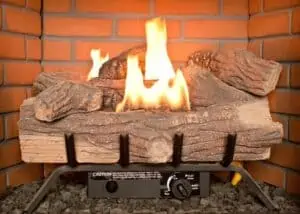How to Repair Cracked Rock Fireplaces and Mortar Joints?
When a fireplace is used frequently, it can take its toll on the bricks and mortar. The heat from the fire expands and contracts these materials, which can cause cracks and other damage. This is why it’s important to repair cracked rock fireplaces and mortar joints as soon as possible.
(Looking for a”rustic stone fireplace repair“? Contact us Today!)

The first step is to thoroughly inspect the fireplace for any signs of damage. If you see any large cracks, crumbling or missing mortar, broken or damaged bricks, or other significant damage, you should call a professional mason or fireplace contractor to have the problem repaired.
It is also a good idea to keep both smoke and carbon monoxide detectors in the same room as the fireplace to help detect any problems. Smoke and carbon monoxide are toxic gases that can lead to serious health problems.
If you notice any of these signs, start by removing the fire grate and vacuuming out the inside of the firebox. This will remove any ash, soot or debris that may have settled in the firebox and on the walls and floor of the firebox.
Next, use a linoleum knife to scrape loose mortar out of the joints between fire bricks. This will make it easier to clean the firebox.
Once the firebox has been cleaned, use a refractory caulk to fill small gaps in the mortar around the bricks. This type of caulk contains silica for heat resistance and is made specifically for repairing fireplaces. It usually dries to a light gray color and darkens as the fire burns away.
Applying refractory caulk can be a relatively quick, easy, and inexpensive fix for minor cracks in the firebox. But if you have more serious damage to the firebox or if you want to completely seal it, contact a professional mason to handle the repairs.
Refractory caulk is also a great way to add color and texture to a stone mantel, or cover a decorative accent wall. This type of caulk is available in a variety of colors and can be easily applied with a caulking gun.
When the caulk has had a chance to dry, inspect it and remove any excess that you can. You can also check for any shrinkage in the caulk that you might have missed before applying a second coat.
A fireplace is an integral part of any home. It provides warmth and a cozy atmosphere in the winter, and it can provide a beautiful focal point in the summer. But it can also cause significant structural damage if not maintained properly.
If you have a brick or natural stone fireplace, it’s not uncommon to notice cracks in the mortar between the fire bricks. These are known as “hairline” cracks. Hairline cracks are cosmetic and not structural in nature, but they can be a safety concern, as moisture can penetrate the crack and soak into the surrounding masonry.
These cracks can lead to the spread of fire. When a crack is larger, it’s more likely that flames will get through the crack, potentially causing a fire in the room.

